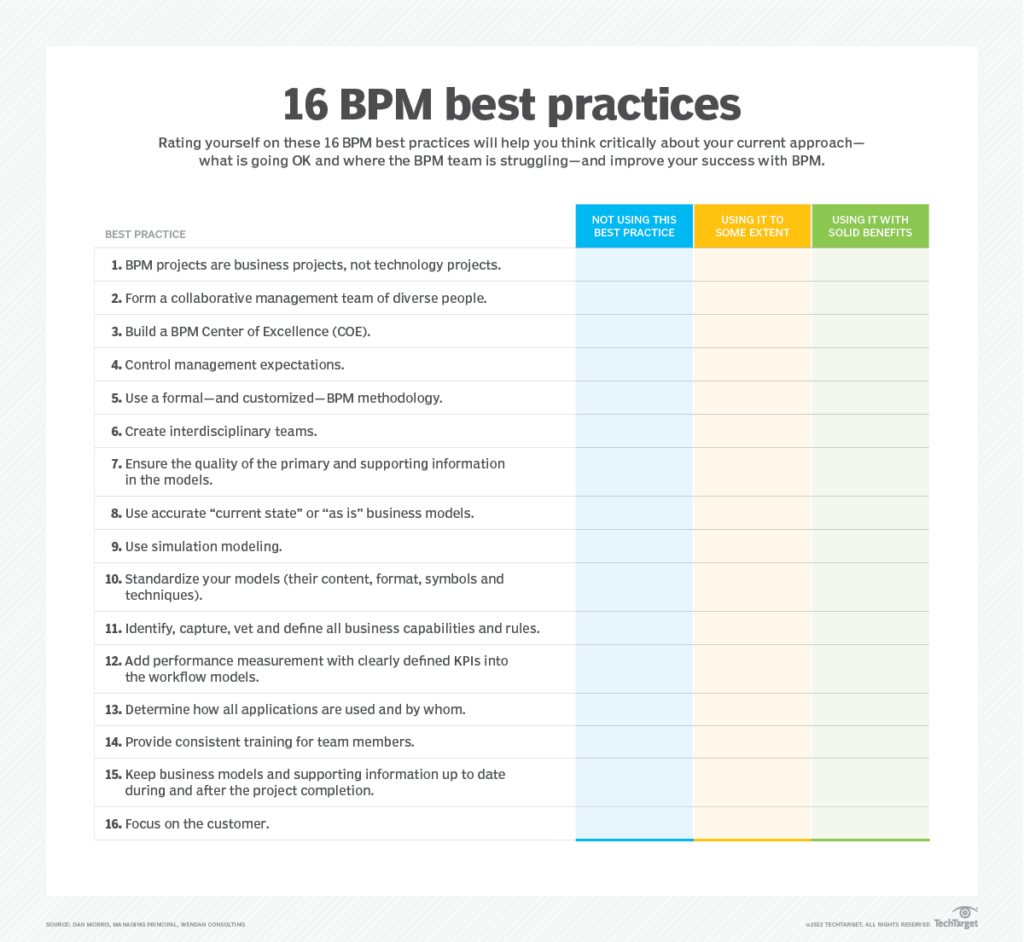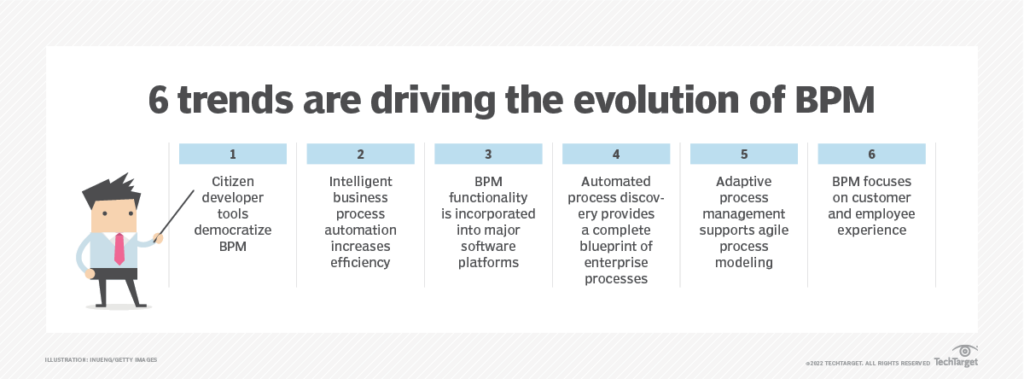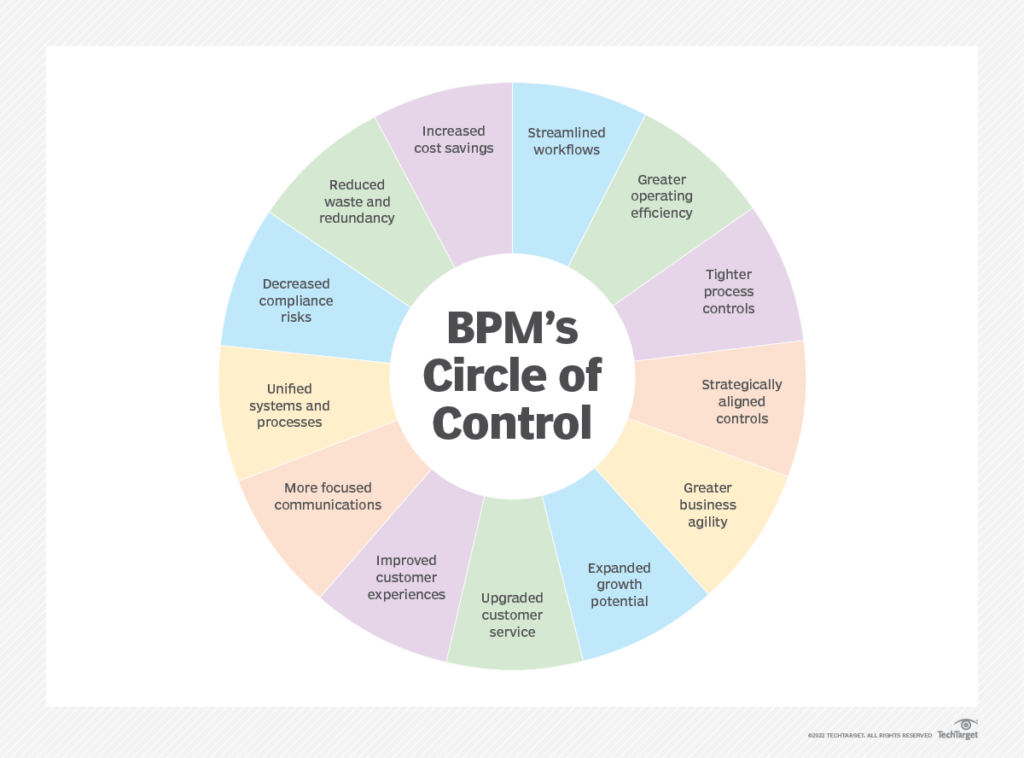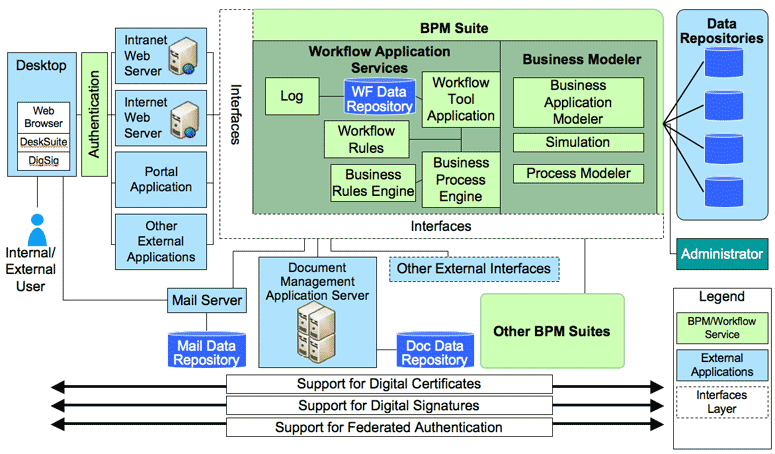Business Process Management Quality Control
Business process management (BPM) is a structured approach to improving the processes organizations use to get work done, serve their customers and generate business value. A business process is an activity or set of activities that helps accomplish an organization’s goals, such as increasing profits or promoting workforce diversity. BPM uses various methods to improve a business process by analyzing it, modeling how it works in different scenarios, implementing changes, monitoring the new process and continuously improving its ability to drive desired business outcomes and results.
BPM is a broad discipline and, by definition, a dynamic one given how the organizational roles, rules, tactics, business goals and other elements it encompasses are constantly changing. Over the years, BPM has accommodated a variety of optimization methodologies, from Six Sigma and lean management to Agile.
As business processes at some companies became too large and complex to be managed without the aid of automated tools, BPM software products were developed to support large-scale business change. These enabling BPM technologies have in turn evolved, driven by advances in AI, machine learning and other so-called intelligent technologies that are providing new ways to discover, design, measure, improve and automate workflows. With the rise of digital business, BPM’s traditional focus on back-end processes has shifted to now include the optimization of customer and employee systems of engagement.
Key takeways
- Cost optimization.
- Increased efficiency.
- Increased sales volume.
- Decreased employee’s rotation.
- Higher profits.
Why is business process management important?
Business process management is important because effective business processes are crucial to enterprise success. Common examples of processes that help companies drive business goals include the following:
- developing and making a new product
- fulfilling a product order
- managing customer service
- assimilating a new employee
These business operations can entail hundreds or even thousands of tasks and the approvals required to complete them. They typically involve people, IT systems and other machinery within the business and can also involve business process outsourcing providers. A well-designed business process breaks these tasks into structured, repeatable steps that workers can follow to produce consistent results. The repeatable steps help organizations predict the resources they need, lowering the risk of under- or over-allocating resources. Measuring the steps reveals weak links and bottlenecks, pointing the way to potential business process improvements.
BPM expert Michael Rosemann, professor of innovation systems at Queensland University of Technology and director of the university’s Centre for Future Enterprise, likened business processes to the lifeblood of an organization: “Like blood vessels, they fill it with life and determine its way and speed of value creation as well as the cost to serve its customer base,” wrote Rosemann in the forward to the newly revised Business Process Change: A Business Process Management Guide for Managers and Process Professionals by Paul Harmon. “Thus processes reflect not only organizational productivity, effectiveness, and efficiency, but also its reliability, complexity, and ultimately its culture.”
A poorly conceived or ill-managed business process can therefore damage a company, impeding productivity and efficiency. And, if an ineffectual process is automated as is, it can actually amplify poor performance, undermining business goals.
BPM’s systematic methods for discovering, modeling, improving, automating and continuously monitoring business processes are designed to ensure that doesn’t happen. Done well, BPM helps companies deliver products and services efficiently at lower cost and aligns processes to business goals. A BPM approach to process improvement and automation also helps companies adapt to changing needs — another reason for its relevance today, according to process experts.
The intense pace of business change in the 21st century shows no signs of slowing. Organizations must be able to respond quickly and effectively to succeed. “Playing catch-up is no longer a viable strategy — things are changing too fast,” explained Daniel Morris, managing principal at Wendan Transformation Consulting, which specializes in business transformation. Moreover, successful companies are leapfrogging the competition with new methods, ideas and products.
BPM proponents like Morris make the case that the ability to facilitate cost-effective, low-risk and rapid business process change is BPM’s underlying value proposition. “It enables you to continuously reinvent your business operations, injecting innovation as you go and do so over the long haul,” he said.
What are the stages of the BPM lifecycle?
BPM, as noted, covers a lot of ground. Many BPM experts refer to the following five phases when describing a BPM project:
- Design. Analyze the existing process to see what can be improved.
- Then, develop the business process as it should ideally exist using standardization and automation.
- Model. Look at how the redesigned business process operates in different scenarios.
- Implement. Execute improvements, including standardization and process automation.
- Monitor. Track improvements to see how they perform.
- Optimize. Continue to improve the business process on an ongoing basis.
Some practitioners include a sixth step — business process reengineering (BPR) — to refer to what happens when adjustments to an existing process no longer drive the desired business results and require radical reinvention, usually involving the heavy use of automation. Other BPM lifecycle schemas include separate phases for analyzing, automating and managing business processes.
While the BPM lifecycle seems straightforward enough, each phase can take months or more and requires careful planning. Business processes typically span multiple systems and departments. Onboarding an employee, for example, could involve not only HR, but also the IT department to issue security credentials and computer equipment, finance to set up tax documents, training programs for on-the-job education and so on.
Improving a business process also typically involves many groups of people, including the following:
- Executives in charge of aligning business processes with business goals.
- BPM specialists to help develop processes.
- Owners of the business process.
- Employees carrying out the work.
- IT professionals responsible for implementing the BPM-enabling tools.
Moreover, the work of discovering and analyzing existing workflows, generating and testing new models, and optimizing a business process can generate thousands of documents. There is a lot of room for failure if BPM is not managed well.
BPM best practices
As BPM has matured, best practices have emerged to help keep this complex process improvement work on track. The to-do list begins with understanding that BPM is a business project, not a technology project, said Morris in his article “16 BPM best practices to ensure project success.”
“While technology updates and application development and enhancement are normally part of mid-to-large BPM initiatives, the primary focus … should be on business operations and organizational management,” Morris wrote. “This ensures that direct, measurable business improvement can be continually delivered in a controlled manner as the business evolves.”
Establishing a BPM Center of Excellence is a best practice that midsize and large companies might want to consider. Other tips from Morris include the following:
- Create interdisciplinary teams.
- Use a formal BPM methodology.
- Use simulation modeling.
- Add performance measurement with clearly defined KPIs into the workflow models.
What are the benefits of business process management?
BPM’s structured approach to managing business processes improves the quality of work and operational efficiency — the two primary reasons companies adopt it. A well-executed BPM program can eliminate waste, cut errors, save time, improve compliance, increase agility, support digital transformation and ultimately help deliver better products and services to customers.
BPM can also be an effective management tool for the following reasons:
- BPM’s focus on standardizing processes reduces the risk of human error.
- Embedded analytics gives managers more visibility into process performance and helps them identify bottlenecks.
- Automation tools increase efficiency and let employees focus on tasks that require human expertise and interventions.
All of the above give employees more time to identify other process enhancements and automations for continuous improvement of business processes.
What are the challenges of business process management?
Challenges abound in any business initiative that involves changing the status quo. That is especially true of BPM, where the complex work of process improvement spans different roles, systems and ways of working.
To maximize the benefits of BPM, organizations must be prepared for the challenges they might encounter and have a plan for addressing them, as explained in an article by technology reporter George Lawton, who covers technology-enabled business transformation. The following obstacles are the most common reasons for BPM failures, according to the experts Lawton interviewed:
- Lack of executive buy-in and support.
- Unclear business goals and objectives.
- Inadequate testing infrastructures.
- Confusion about the right tool for the job.
- Hidden processes vulnerable to breakdowns.
- Poor process visibility and traceability.
- Inflexible third-party contracts and incentives.
Human resources. BPM software can make HR departments more efficient by, for example, simplifying the review of timesheets. Onboarding new hires is another HR area where BPM can improve and speed up the many steps of the process. When document-centric HR tasks are automated, it cuts the use of paper forms throughout a company.
Finance. Finance departments receive a variety of documentation from both system-centric and human-centric processes. They receive a large volume of emails and paper forms about the company’s internal and external financial processes. For example, a BPM platform enables finance departments to process employee travel requests faster. It can also streamline purchasing processes.
Sales. Sales teams also deal with a mix of human- and system-centric processes. BPM tools can coordinate the exchange of sales quotes and invoices and ultimately shorten sales cycle workflows.
BPM, as explained in this guide, is a discipline, not a technology. It aims to improve processes using a set of principles and techniques derived from methodologies such as Six Sigma, total quality management and lean management. BPM may or may not involve automation and, as proponents stress, it is as much a mindset as it is a technical discipline: Companies that adopt BPM must see the value of taking a process approach to fulfilling business goals and the value of continuous process improvement. As noted, BPM’s collection of enabling technologies — BPMS — has evolved to better address the business need for continuous improvement and agile transformation at scale.
Cost of BPM. According to experts like Morris, the cost of a BPM initiative varies widely, depending on the scope of the project, the number of users, the volume of transactions per hour, and the number of locations that will access the applications and annual usage, among other factors. Once project leaders figure out how the company wants to use BPMS currently and down the line, they then must dig into which BPMS capabilities are required and which would be nice to have but aren’t mandatory.











